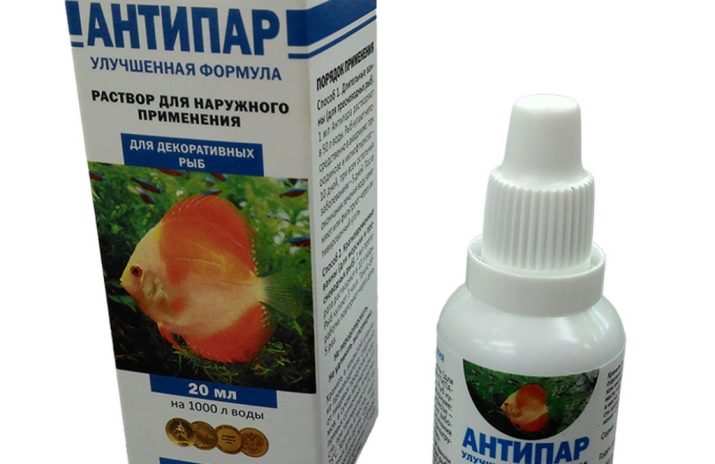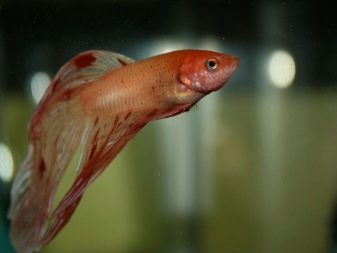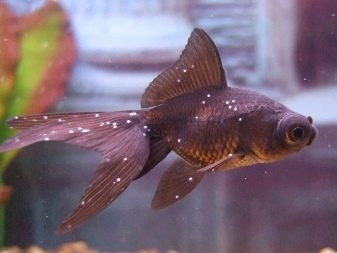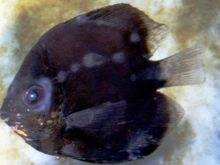"Antipar" for fish: description and instructions for use

Every aquarist knows that caring for fish, even the most unpretentious, is not easy at all. They need a lot of care, keeping the reservoir clean, oxygen supply and a special microclimate. To create a comfortable environment and a healthy biocenosis, Antipar is often used.

What it is?
"Antipar" is an antifungal, fungicidal and antiparasitic composition that is used in the treatment of many diseases of aquatic inhabitants. It includes:
- malachite green - 0.2-0.3%;
- formalin - about 10%;
- water.
"Antipar" has a complex effect: malachite green is characterized by antiparasitic and antihistamine action, it binds the cytoplasmic intracellular structures of bacteria and parasites, and formalin promotes the denaturation of their proteins.
As a result of such a complex attack, the pathogens of infections have a metabolic disorder, and they die.

"Antipar" refers to substances of III hazard class in accordance with GOST 12.1.004-76 - this means that the remedy low-hazard, does not have a toxic effect on aquatic plants, and if the recommended dosages are observed, it is well tolerated by fish.
Malachite green additionally enriches the water with hydrogen ions, and is also highly effective in poisoning the inhabitants of the aquarium with nitrites, nitrates and other organic decomposition products.

It is produced in plastic tubes of 15, 20 and 25 ml, packed in small cardboard boxes. Allowed other packaging according to TU, agreed in the manner prescribed by law.
Each box must be marked, the name of the drug and its composition are prescribed, and the name of the manufacturer, its contact details and brand name are additionally indicated. According to the requirements the package must also contain information about the mass of the product, the shelf life, storage conditions of the composition, and also include instructions for its use.

Appointment
You can start using Antipara when the following symptoms appear:
- the fish become lethargic, inactive, eat little and often freeze in place;
- the color of the cover fades;
- spots, streaks and growths appear on the body of pets;
- animals rub against driftwood and other decorative elements of the aquarium;
- constantly rise to the surface of the water and greedily swallow air.


Antipar successfully treats such fish diseases as:
- osteosis - dangerous invasive pathology affecting the gills and skin of fish;
- cryptobiosis - a disease caused by microorganisms parasitizing in the blood and gills of fish;
- amoebiasis - invasive disease, manifested in colitis with intra-intestinal manifestations, recurrent disease;
- saprolegniosis - a fungal disease that causes serious damage to the gills, fins and skin;
- trichophriosis - caused by parasites that attach to the gills of the animal.
Antipar is also highly effective in the treatment of urolelosis, brooklynellosis and many other diseases of aquarium fish.



"Antipar" is often used for the prevention of putrefactive infections, so it is relevant even with a simple launch of new pets into the tank.
How to apply correctly?
If you notice that your fish are showing signs of disease, then you should urgently start fighting against dangerous parasites, fungi and bacteria.
To begin with, diseased animals must be transplanted from a common aquarium into a small separate container.
It is important to create conditions there that correspond to their habitual habitat - it is best to use the water from the aquarium, first replacing it with 20-30% pure, and this must be done several times.


Antipar is quite simple to use:
- the required amount of the drug is calculated based on the ratio of 1 ml of the composition to 50 liters of water - for freshwater fish;
- for animals that prefer brackish water, 10 ml for every 10 liters of water will be sufficient.
There is no need to offer food to the fish during therapy. If you still decide to feed the pet, then you need to do this no earlier than 2 hours after using the drug, and be sure to remove all food debris after feeding.
The filter and lamps are turned off at the time of processing. It is best to process at the end of the day, when no natural or artificial light will enter the tank.


In case of fungal infections, treatment is carried out for 5 days, while with each procedure the amount of the drug is gradually reduced, so that at the end of the therapeutic cycle, the dosage is reduced by 2 times.
If the fish are seriously ill, the drug is used a little differently: the fish should be bathed in it for 2.5-3 hours, and then returned to the aquarium. Such manipulations are repeated every other day until the pets are fully recovered.
After the treatment, it is necessary to replace the water in the tank and remove the remnants of "Antipara", usually activated carbon is used for this - it is laid out along the bottom in bags. Materials used for disinfection be sure to rinse with a fungicidal agent.

The soil, decorative elements and aquatic plants are not removed for the period of treatment.
Adverse reactions and overdose
Failure to observe the exact dosages of the drug can lead to intoxication of the organism of the fish, usually it manifests itself in the loss of balance by the fish and a violation of their coordination of movements. In this case, the animals it is necessary to place it in a container with clean water as soon as possible, when all dangerous symptoms have passed, it will be possible to return the pets to their place.
To minimize the risk of adverse reactions, before using Antipar by adding it to an artificial reservoir, it is advisable to test it on a couple of sick fish.
In this way, you can determine the degree of its effect on pets and, if possible, adjust the concentration and processing time of each individual.

Contraindications
Please note that you do not need to pour the solution directly from the bottle into the water; it will be correct to dilute it first with ordinary water in a separate container, and then pour it into the aquarium.
There are no contraindications to the use of Antipara, but if your fish have visible injuries and bruises - do not use the product without first consulting a veterinarian.
Please note that it is unacceptable to use the drug in conjunction with prophylactic agents based on silver, zinc, mercury, as well as together with oxidants and alkaline solutions.


Care must be taken when treating scaleless pets, for example, for neon therapy it is better to take only half of the recommended dose.
Storage conditions
Antipar should be stored properly. The product is recommended for use within two years after its manufacture. For storage it is better to use darkened place at temperatures from 0 to +25 degrees Celsius.
It is not recommended to store Antipar together with feed and other food products.
The drug should be kept in a closed access so that children cannot take it - formalin is included in its structure, therefore, accidental ingestion can have a negative effect on the baby's health.
About "Antipar" and the secrets of its use, see below.








